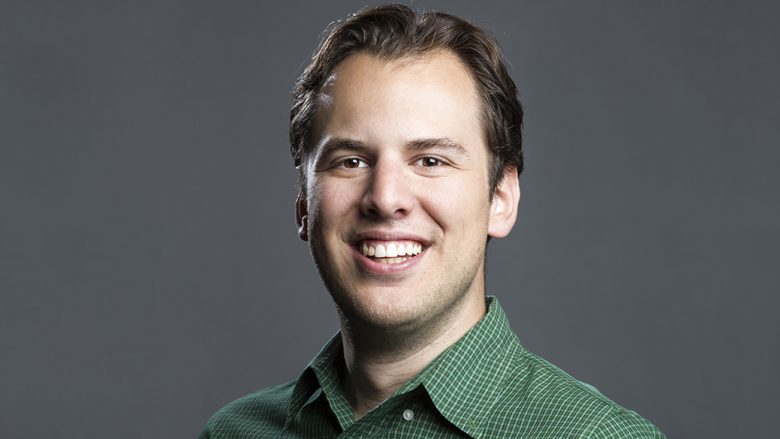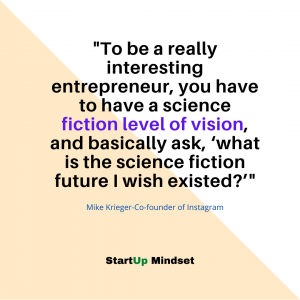An incredible innovator, entrepreneur, and corporate speaker, Mike Krieger is best known for co-founding Instagram. Spotting a gap in the market for a photo-sharing app, Mike designed and developed the internationally successful social media site alongside his partner, Kevin Systrom.
During his time as Chief Technology Officer, Mike successfully expanded the platform from a few million to one billion monthly active users. Now recognized as one of the biggest contributions to the social networking field, Instagram is a true testament to Mike’s entrepreneurialism, technological skills, and influential career.
Now a highly sought-after speaker, Mike offers his expert advice to corporate audiences, tailoring his strategies and solutions to businesses globally. In this exclusive interview, Mike shares the secret to maintaining attention in the digital era, how to create a culture of innovation, and explains the importance of adaptability in the modern world.
Q: What was your initial vision for Instagram?
“We were really excited about taking something that was brand new at the time, which was the mobile phone with a camera, and making it really social.
“We wanted to make something that meant the photos you took didn’t just end up on your camera roll, but became something you were excited to share with your friends and beyond. We created a way of doing it that was mobile first, really fun and social, and something that nobody had done before.”
Q: One of your main aims was to ensure the platform gave small businesses opportunities to thrive, why was this important to you and how important is the continued support of small businesses?
“We saw that there was this huge opportunity for individual makers, creators and small businesses to find a new audience. I’m from Brazil originally, I grew up in Sao Paulo. I went home and saw how they were using Instagram. Suddenly all these stores, food stores, clothing stores, and small businesses that otherwise would not have had a new market, all of a sudden were able to reach people on Instagram, sell via Instagram, direct messages, and develop really creative new business ideas.
“For us, Instagram is so much about expressing your creativity, which can be expressed through how you take photos and how you take videos, but it can also come in the products and the business that you create. And so, Instagram was well matched to small businesses, too.”
Q: What is the secret to capturing and maintaining audience attention in the digital era?
“To capture attention, you need to focus on giving people an experience that they otherwise didn’t have. With Instagram, we let people almost teleport. Of course, we don’t have real teleporters, but using your phone at least you could essentially travel to the city where your friends live, or for me it was Tokyo and Japan – I love Japan. All of a sudden, I could follow people from Japan, and I was in the street in Japan experiencing life as it was – that was an experience that people didn’t have before.
“To be a really interesting entrepreneur, you have to have a science fiction level of vision, and basically ask, ‘what is the science fiction future I wish existed?’, and then, ‘how can I accomplish that with current technology?’.
“To retain attention, you need to make sure you remain very adaptable and you continue to evolve the product. Instagram as it was when it launched was just photos that were all square in one feed, in chronological order and almost all of those words have changed. If you look at the Instagram as it was two years ago when Kevin and I left, it’s continued to evolve. It’s now photos, videos and stories. Our feed is now personalized, and you can post non-square photos.
“I find that often businesses get very caught up in the way things are and think that’s why they succeeded when actually, the way you maintain attention is always asking, ‘what are we holding on to that we think is important, but our customers wish we would move on from?’.
“Twitter went through this for a long time. They were maniacally into this 140-character thing, it was defining their whole company. And finally, they realized, ‘wow, I think that might actually be holding us back’. So, they expanded it and now people can write longer, and I think those things are very easy for you to convince yourself internally that they are almost sacred, when part of remaining relevant is always questioning those things.”
Q: What piece of advice would you give to young entrepreneurs who are about to enter the professional landscape?
“I think you should start by building something you’re personally passionate about.
“I’ve seen entrepreneurs fall into the trap of doing market research, investing in something they think is a big opportunity, but entrepreneurship is a long game. If you’re not passionate about what you’re building, year two will feel like a slog, much less years five through to 10.
“It’s figuring out the problem that you can’t stop thinking about – you’ll know it when you feel it. You go to bed and start thinking about the problem. You wake up and you’re excited, you want to tell your friends about it. It doesn’t necessarily mean it’s something that only you are going to use, but something that you feel like the world is worse off if it doesn’t exist.
“So rather than set out with the goal of, ‘I want to be an entrepreneur’ or ‘I want to start a company’, start off with the goal that there is something in the world you wished was different, and the best way of contributing to that is to start a company or create a product. Making sure you don’t have that backwards is really, really important as a starting point.
“Then it’s important to explore your curiosity. I find the best entrepreneurs are the ones that don’t put themselves in a box and say, ‘I know how to do design, but I don’t know how to do engineering’ or ‘I know how to create products, but I don’t know how to market them’.
“As an entrepreneur, you don’t have the luxury of hiring a head of sales, a head of design, head of product, head of marketing, head of H.R. You and your co-founders need to wear all those hats at once. So, if you don’t have the curiosity to think, ‘maybe I never would have chosen a career as a head of sales, but if I need to do sales, where can I learn about that and how can I do that in my own way, up to the point where we can hire somebody?’. It doesn’t mean you’ll be doing it forever.”
Q: Why is it important that companies are adaptable and keep up with the latest trends in technology?
“Two things you can definitely count on is that technology will continue to evolve, and people will always surprise you in the ways they use that technology.
“That means you have to constantly adapt. We talked about small businesses earlier, if you asked me 15 years ago, ‘can you create a store front completely digitally?’ I might have said, ‘no, you probably need people to come in the store and look at things themselves’. But all of a sudden, that changed, and Instagram created virtual store fronts for people. So, if you stand still, both technology and people’s expectations will leave you behind.
“And on the other hand, you need to ask, ‘what is the trend that’s just around the corner?’. I think this is the thing that we did uniquely to build Instagram. We weren’t trying to invent spaceships, we weren’t trying to go to the moon – those are great goals, but for other entrepreneurs. We were always asking, ‘what is just around the corner, that if we do right, will become completely universal’. You have to look ahead and say, ‘what is just about ready to explode if we can successfully create a really great product around it?’.”
Q: If you could give yourself one piece of advice at the start of your career, what would it be?
“I have learned that I really do my best work when my life is really in balance. That means getting outside. That means making sure the relationships in my life are well cared for and well maintained. It means meditating. It means all these things that make for a holistic human being.
“While in the short run it could feel like that extra hour is going to be productive, in the long run I actually think it makes you less complete and less creative.
“If I could go back, I’d tell myself to make sure I balance my time.”
This interview was done in partnership with Champions Speakers who have unparalleled access to some of the world’s leading technology speakers.











Pingback: ایجاد یک تجارت در حال تغییر جهان: مصاحبه با مایک کریگر، بنیانگذار اینستاگرام - مجله خبری سوشیال لایک - سوشیال لایک
Pingback: ایجاد یک تجارت در حال تغییر جهان: مصاحبه با مایک کریگر، بنیانگذار اینستاگرام -بی ریل - بی ریل
Pingback: ایجاد یک تجارت در حال تغییر جهان: مصاحبه با مایک کریگر، بنیانگذار اینستاگرام - کلاسیت - کلاسیت
Pingback: ایجاد یک تجارت در حال تغییر جهان: مصاحبه با مایک کریگر، بنیانگذار اینستاگرام - طرز فکر استارت آپ -پنل اینستاگرام - پنل اینستاگرام
Pingback: Building a World-Changing Business: Interview with Instagram Co-Founder Mike Krieger – Entrepreneur – Start, Run and Grow Your Business